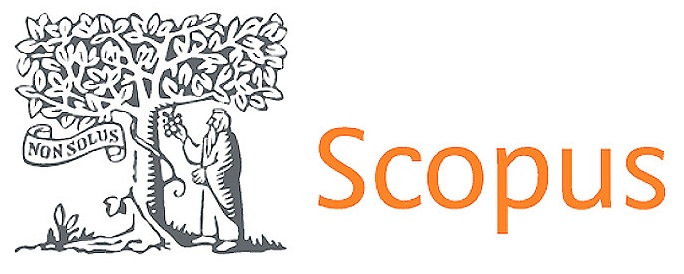Integration of Educational Content in Social Media Platforms: Content Creators’ Experiences
DOI:
https://doi.org/10.56294/sctconf20251319Keywords:
phenomenology, educational content, social media, content creatorsAbstract
Introduction: This study addresses the problem of understanding educational content creators' lived experiences and challenges in developing impactful social media content.
Methods: The study employed a qualitative phenomenological research design involving 10 content creators. The inclusion criteria specified that participants must be educators who were content creators actively producing educational materials for social media platforms, with a minimum of one (1) year of experience in content creation and social media channels with 300,000 or more subscribers. It used the thematic analysis steps.
Results: Through a phenomenological approach, the research identified several themes, including (1) designing user-centered content, (2) balancing educational values and engagement, (3) applying principles of accuracy and relevance, (4) considering ethics and fact-checking, (5) fostering community building and collaboration, (6) managing challenges on time management and limited resources, and (7) measuring effectiveness through engagement metrics. The findings reveal that creators prioritize audience needs and strive to balance entertaining and informative content while maintaining ethical standards.
Conclusion: Despite facing significant challenges such as resource limitations and time management, creators were committed to producing meaningful educational content that enhanced student engagement and learning outcomes
References
1. Gleason NW, Gillern S. Developing an open education resource strategy: The role of social media in higher education. Innovations in Education and Teaching International. 2018;55(4):436-444. doi:10.1080/14703297.2017.1396617
2. Sivakumar A. Understanding the role of social media in education: A systematic review. International Journal of Educational Technology and Learning. 2023;8(2):1-12. doi:10.1177/20421229221085129
3. Greenhow C, Glavin S, Willet K. What Should Be the Role of Social Media in Education? Sage Journals. 2019;6(2). doi:10.1177/2372732219865290 DOI: https://doi.org/10.1177/2372732219865290
4. Dimacangun, C., & Guillena, J. (2023). Social media as a pedagogical tool: A framework for enhancing learning. International Journal of Technology in Education and Science, 7(1), 23-34. https://doi.org/10.46328/ijtes.v7i1.565
5. Erkan B, Huseyin B. The purpose of students’ social media use and determining their perspectives on education. Procedia Computer Science. 2017;120(1):177-181. doi:10.1016/j.procs.2017.11.226 DOI: https://doi.org/10.1016/j.procs.2017.11.226
6. Ozkakir MF, Erkoc A. The use of social media in education: A review of recent research. International Journal of Education and Research. 2015;3(6):289-302. doi:10.13140/RG.2.1.1310.7924
7. Calunsag DM. The impact of social media on students’ academic performance in higher education. Journal of Educational Technology. 2023;35(1):50-61. doi:10.1007/s10898-022-00385-y
8. Nieva RA, Hallsen JD. The effects of social media on collaborative learning: A review of literature. Journal of Educational Computing Research. 2023;61(1):54-76. https://doi.org/10.1177/07356331221098866
9. Alamri MM, Cottam D, Khamis H, Alharbi M. The effectiveness of social media in higher education: A study of students' perceptions and behavior. International Journal of Educational Technology in Higher Education. 2017;14(1):1-16. doi:10.1186/s41239-017-0070-y
10. Du X, Zhang J, Chen Y, Wu S. Learning anytime, anywhere: A spatio-temporal analysis for online learning. International Journal of Educational Technology in Higher Education. 2019;16(1). doi:10.1186/s41239-019-0178- DOI: https://doi.org/10.1080/10494820.2019.1633546
11. Braun V, Clarke V. Using thematic analysis in psychology. Qualitative Research in Psychology. 2006;3(2):77–101. doi:10.1191/1478088706qp063oa DOI: https://doi.org/10.1191/1478088706qp063oa
12. Purnama Y, Asdlori A. The Role of Social Media in Students’ Social Perception and Interaction: Implications for Learning and Education. Technology and Society Perspectives (TACIT). 2023;1(2):45–55. doi:10.61100/tacit.v1i2.50 DOI: https://doi.org/10.61100/tacit.v1i2.50
13. Abdulrahaman MD, Фарук, Н, Oloyede A, Surajudeen-Bakinde NT, Olawoyin LA, Mejabi OV, Imam-Fulani YO, Fahm AO, Azeez AL. Multimedia tools in the teaching and learning processes: A systematic review. Heliyon. 2020;6(11). doi:10.1016/j.heliyon.2020.e05312 DOI: https://doi.org/10.1016/j.heliyon.2020.e05312
14. Moghavvemi S. Social media as a complementary learning tool for teaching and learning: The case of YouTube. International Journal of Management Education. 2017;16(1):37-42. doi:10.1016/j.ijme.2017.12.001 DOI: https://doi.org/10.1016/j.ijme.2017.12.001
15. Chawinga WD. Taking social media to a university classroom: Teaching and learning using Twitter and blogs. International Journal of Educational Technology in Higher Education. 2018;14(1). doi:10.1186/s41239-017-0041-6 DOI: https://doi.org/10.1186/s41239-017-0041-6
16. Chugh, R., & Ruhi, U. (2017). Social media in higher education: A literature review of Facebook. Education and Information Technologies, 23(2), 605–616. https://doi.org/10.1007/s10639-017-9621-2 DOI: https://doi.org/10.1007/s10639-017-9621-2
17. Purwanto A, Fahmi K, Cahyono Y. The Benefits of Using Social Media in the Learning Process of Students in the Digital Literacy Era and the Education 4.0 Era. Journal of Information Systems and Management (JISMA). 2022;2(2):1–7. doi:10.4444/jisma.v2i2.296
18. Camilleri MA, Camilleri AC. Digital learning resources and ubiquitous technologies in education. Technology, Knowledge, and Learning. 2016;22(1):65–82. doi:10.1007/s10758-016-9287-7 DOI: https://doi.org/10.1007/s10758-016-9287-7
19. Anggraini T, Widarti A. Social-media as a learning tool: A systematic review. Journal of Educational Research and Practice.2022;12(1):112-123. doi:10.5590/JERAP.2022.12.1.12 DOI: https://doi.org/10.5590/JERAP.2022.12.1.12
20. Gleason NW, Gillern S. Developing an open education resource strategy: The role of social media in higher education. Innovations in Education and Teaching International. 2018;55(4):436-444. doi:10.1080/14703297.2017.1396617
21. Kenan J. 15 ways to use social media for education. Sprout Social. 2023. https://sproutsocial.com/insights/social-media-for-education/
22. Spiteri M, Rundgren SC. Literature review on the factors affecting primary teachers’ use of digital technology. Technology, Knowledge, and Learning. 2018;25(1):115-128. doi:10.1007/s10758-018-9376-x DOI: https://doi.org/10.1007/s10758-018-9376-x
23. Sivakumar A. Understanding the role of social media in education: A systematic review. International Journal of Educational Technology and Learning. 2023;8(2):1-12. doi:10.1177/20421229221085129
24. Bunghanoy, K. & Sumalinog, G. ESL students’ affective filter and language learning strategies in online classes. Journal of Research, Policy & Practice of Teacher and Teacher Education. 2023;13(1):1-15. doi:10.37134/jrpptte.vol13.1.1.2023 DOI: https://doi.org/10.37134/jrpptte.vol13.1.1.2023
25. Abao, E., Petancio, J. A., Sanchez, J. M., Sumalinog, G. Performance of beginning teachers in the licensure examination for teachers: a national study. Frontiers in Education. 2023;8:1-16. doi:10.3389/feduc.2023.1240658 DOI: https://doi.org/10.3389/feduc.2023.1240658
26. Sumalinog, G. G. Listening anxiety in focus: The case of the foreign university students in the Philippines. International Journal of Current Research. 2018;10(7):71366-71371. https://shorturl.at/qnxwn.
Downloads
Published
Issue
Section
License
Copyright (c) 2025 Ricky P. Alalid , Justin A. Calipayan, Justine Jane S. Yutrago, Regie E. Sabado, Jean Chretien T. Nierves, Ana Rose P. Palogan, Sharmaine O. Banoson, Gino G. Sumalinog (Author)

This work is licensed under a Creative Commons Attribution 4.0 International License.
The article is distributed under the Creative Commons Attribution 4.0 License. Unless otherwise stated, associated published material is distributed under the same licence.



